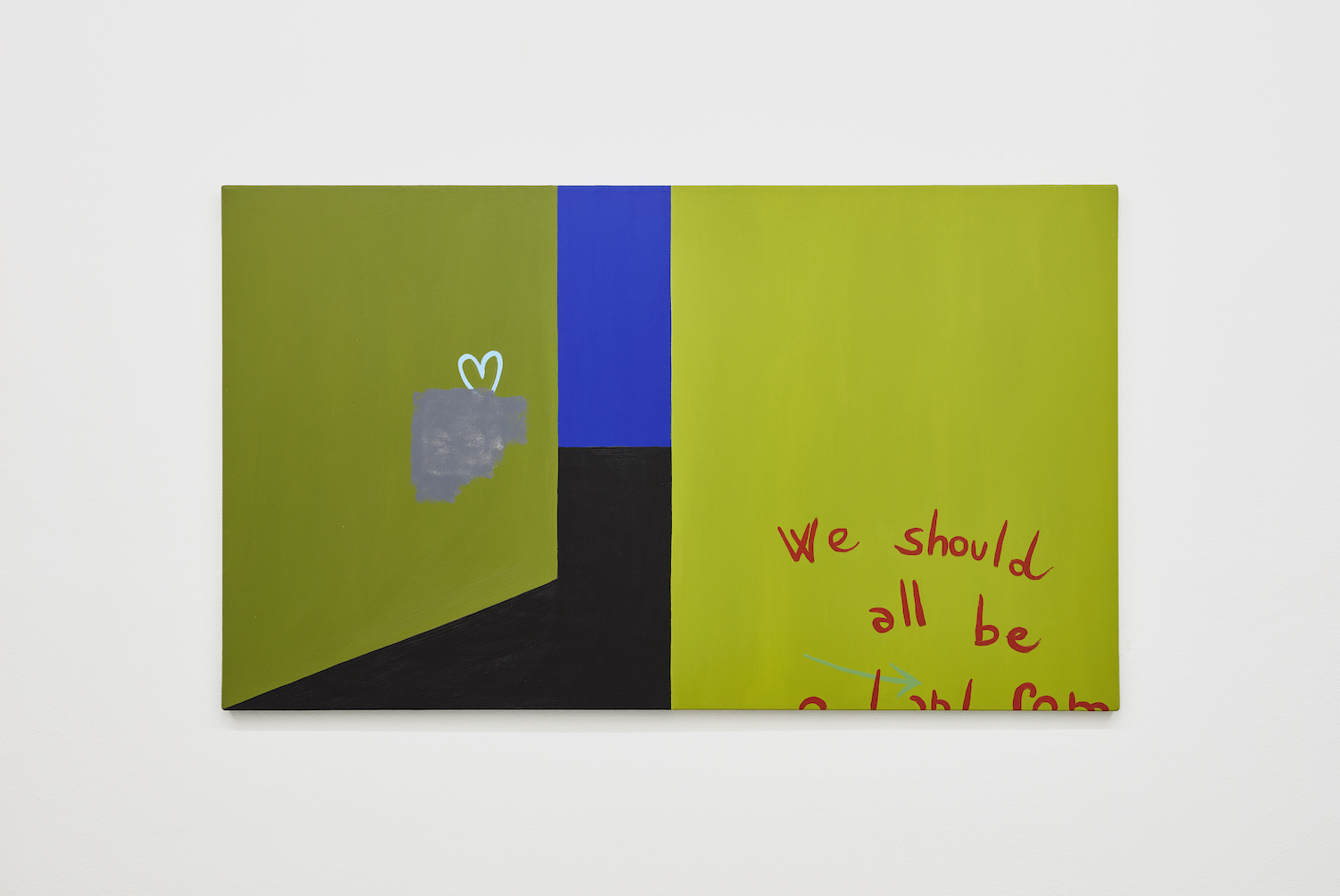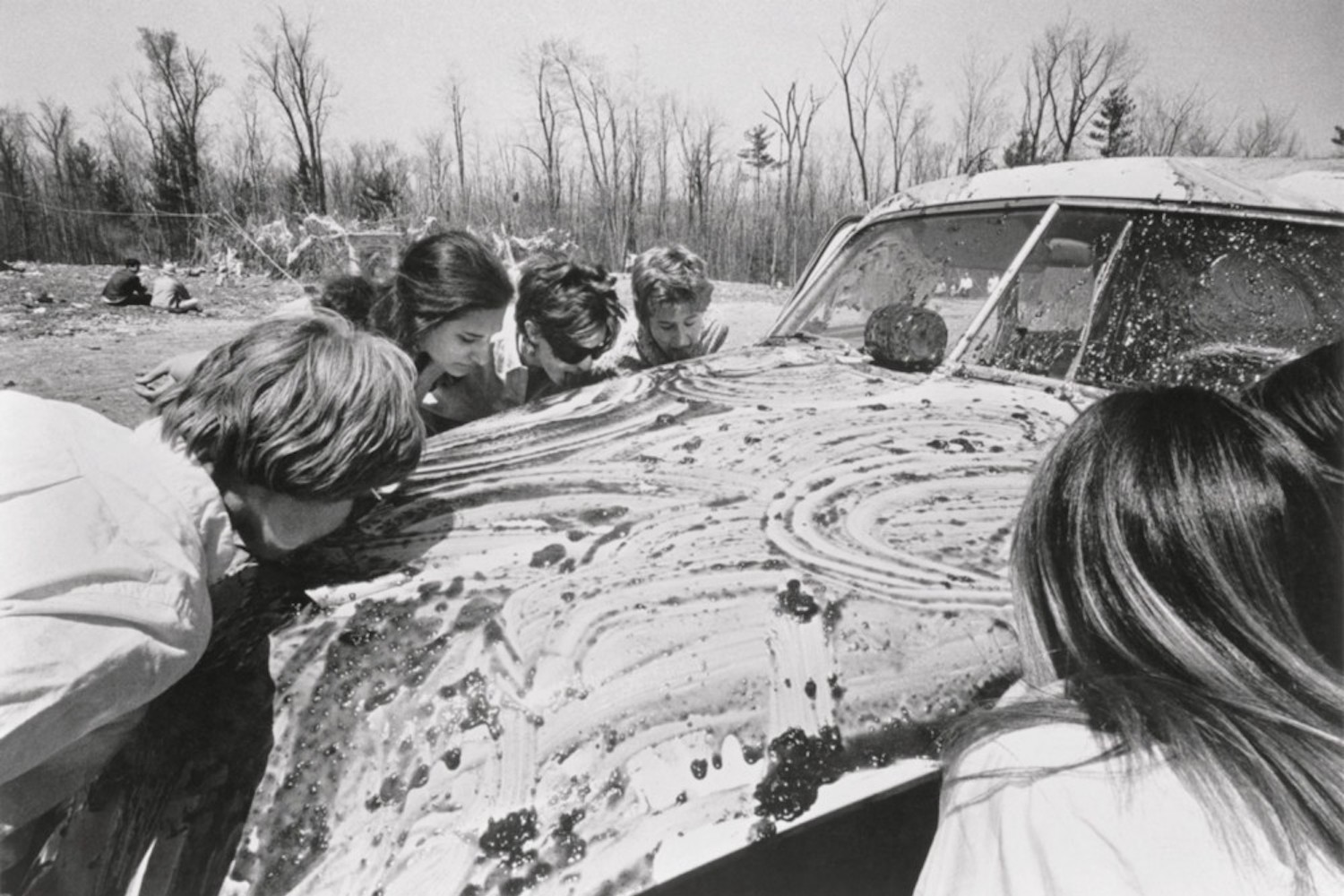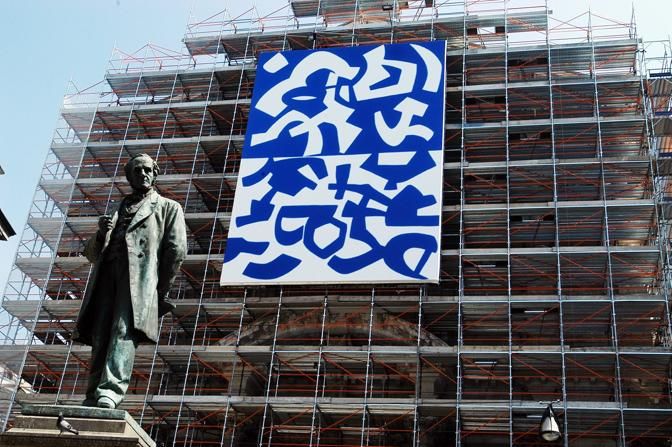“Public Art 2666” is a column that seeks to explore the interaction between the public domain and contemporary artistic practices, giving particular consideration to the resulting social impacts. The research is run by Collettivo 2666.

To the eyes, ears, and fingertips of an average millennial – not to mention the earlier generations – the now world-renowned Chinese app TikTok is perhaps one of the most incomprehensible monsters ever created. To what we call Gen-Z, it is home. And they are ready to defend it. At stake, behind both such incomprehensibility and unfettered enthusiasm, is some form of power, which competitors and political institutions seem to have spotted quickly, though perhaps only superficially: Instagram recognized it as an economic power and introduced the Instagram Reels feature to implement this power in their own platform; and, almost at the same time last summer, the US government recognized it as a political threat, and very nearly banned the app.1
We will not understand what TikTok is until we understand what this power is, and we do not understand this power until we trace the fundamental difference between Instagram and TikTok, between media that come before and after this new medium. An immediate reaction to TikTok would be to point out its basic reliance on video: rather than on images, it is video that this app exploits and reproduces. And yet, video plays and already played a considerable role on Instagram, in which stories and posts have increasingly included video. Thus, we can exclude the video component from the differentiating factors.
In a short chapter on TikTok from her recent book on memes, art, and internet culture, Memestetica, Valentina Tanni gives us an interesting starting point in this regard.2
Implicitly, the Italian scholar argues that TikTok should be read as the apex of that process, initiated by the historical avant-gardes, according to which art and life merge together in an eternal performance – a process whose most unexpected and lively execution can nowadays be observed on the internet and on social media:
“Used for the most part by young or incredibly young people, TikTok represents an incisive proof of a trend by now undeniable: the adoption by millions of people in the world of the language of performance as an everyday and personal strategy of subjectification and communication.” (Tanni)
Tanni has here seized on something pivotal. More than any other medium, TikTok pushes its users to put, front and center, the idea and practice of performance, which in turn destroys the difference between art and life. However, at the same time, as Memestica shows so well, traces of the same use of performance can be found on Instagram and on the rest of the net. The two social media seem, on this point, to go hand in hand. In an Instagram Story and in a TikTok, through the same format, it is the same life which is interpreted, performed, and subjectivized, and which becomes continuous and uninterrupted performance.

We need then to go beyond or rather inside the kind of performance that the two media propose. Perhaps what really changes between the two is the manner in which they respectively articulate this relationship between art and life. It is clear that – being a descendant of Facebook, with which it had always competed until Facebook managed to buy it for $1 billion – Instagram pushes this polarity completely on the side of life. The end of these media is life. And on these media (Facebook, Instagram, etc.), art itself – understood both as the creative and avant-garde techniques proper to these media and as the community of artists and creatives in general – must always already give in to life. As a consequence, this life becomes always already artistic but only in a ridiculous and unconscious manner: of this life, what remains is only an empty and self-reproducing image, wrapped in images eternally reproducible and imitable, memes.
ìOn TikTok the opposite takes place. On TikTok, it seems to be life that must give in to art. As the origins of TikTok show, if originally TikTok was musical.ly, an app to create musical and lip-sync videos, TikTok was not made, like Instagram, to showcase life, but rather to make art out of life. If on Instagram what is at stake is the naked life of the human being, which the app needs to constantly embellish, on TikTok is their being-artistic that is at stake or, more precisely, their being-musical. This is the hidden power of TikTok. The app utilizes and traps perhaps the most revolutionary quality of the human being: its being-musical, the fact that human beings are always already music and poetry, what the philosophers call their “voice”.
If we linger for a moment on the effects of TikTok on ourselves, this controversial claim will become immediately clearer: what Instagram and the other social media had done in regard to the image, transforming it into a meme, an eternally repeatable and reproducible unit, eternally imitable, TikTok has done for the voice. If before in our everyday life, we found ourselves in company or alone trying to replicate within language – and usually failing – images, frogs, cats, or specific human gestures or expressions, now it is as common to find ourselves pronouncing words and sound never spoken by man, woman, or cyborg around us and which we only heard on TikTok: how bizarre, you’ll say, how bizarre.3 The voice, what we have of most fleeting and inimitable has been trapped, yet again.
If we follow a certain line of development of 20th-century Italian philosophy, which goes from Giorgio Colli to Giorgio Agamben and Adriana Cavarero, and we accept the thesis contrary to Derrida’s deconstruction, according to which at the origin of European metaphysics there is not the voice, but the original attempt to capture the voice through writing, then we understand how this is only the conclusion of a thousand-year-long process characteristic of Western civilization. TikTok repeats the original move of metaphysics and entraps the human voice.
But what does it mean that TikTok traps our voice? TikTok’s real success derives from the economy itself that the app creates around the voice, around the constant exchanges which the TikToks need to work: the voice needs to be constantly taken up and exchanged. Someone somewhere in the world makes a TikTok video in which they speak to their pet in a specific manner. Their way of speaking is funny, or in any case it transmits something to someone else, who can take it and add it on to their own video, from which their voice is literally removed to make space for the one from the previous video, in an eternal exchange and transformation, which becomes impossible to stop. From an individual to another, from here to there, from China to America, from Europe to Africa, what travels is the voice.
In terms of Media History, one could say that this process was already at work with the invention of the phonograph and the gramophone, and even more with that of the radio. There as well, the voice and the being-musical of human beings were imitated and reproduced by physical media. The voice had already become eternally reproducible and able to travel from one place to another, infinitely exchangeable. And yet, if there is indeed a direct line between older phonic media and TikTok, to make it too direct would imply a misunderstanding of the break that TikTok establishes in the vocal world. If the radio allowed to make the voice fundamentally transportable and exchangeable, namely it split it up from the body that produced it in order to communicate it in real-time somewhere else; TikTok implies a supplementary revolution. Not only is TikTok based on this separation between body and voice, but also on the continuous re-allocation of the voice to another body.4

In doing so, perhaps TikTok accomplishes the most avant-garde move that is left to be made, doing so from both sides on which TikTok functions. On one side, there is the creator of TikToks, a random person, or more often an influencer, who produces videos from which they profit; on the other, the spectator, the user of the platform, who should be the real consumer. But, as we have already noted, the point of TikTok is to destroy this difference between creator and user, performer and audience, between art and life. Here the paradox becomes that the avant-garde gesture and neoliberalism coincide if, like in the notorious case of Uber, neoliberalism is the attempt to blur the difference between those who offer services and those who buy them, but in this case the way through which this exchange happens is precisely through the voice. Indeed, one gives their own voice and the other takes it, in a continuous exchange. That such an exchange of voices hides the truth of the profit underlying it is the most subtle move of the society of the spectacle.
This is the reason behind the uncanny success of TikTok and the reason why it always managed, strangely enough, to compete with Instagram. It always managed to pose a threat to Instagram not because it offers what Instagram offers but better, but rather because it offers something completely different from Instagram: not the eternal reproduction of images, the economy of the image, but rather the even more profound and insidious economy of the voice.
But if we are right and TikTok is the kingdom of the voice, if indeed on TikTok what is at stake is the being-musical of the human being, then this means that to approach TikTok should be, first and foremost, a poetical problem. And the same applies in turn to the rest of social media.
This is what Emanuele Coccia has tried to say, in a different manner, in a short article for Artribune, discussed in the last contribution to the 2666 series by Matthew D’Ambrosio Griffith. Coccia presents the technological revolution of what we call “social media” and their continuity with 20th-century literature under a new light by arguing that while in the past machines were engineered and built as projections and extensions, outside of the human body, of certain bodily organs, the new machines project and extend outside of human beings their very psyche, their soul. While beforehand such a role was left to literature and the arts – the reference is here in particular to the modernist novel – now it is on social media that our psyche, our self, is in question. Following our argument, these machines, which Coccia calls “psychomorphic,” seem to capture our own psyche and project it outside of us in a new form. If the continuity between soul and voice, which the European tradition has always implicitly accepted but only to make it innocuous, can be instead taken seriously, this is precisely what we have found in the case of TikTok: on TikTok, the voice, our own soul, is projected outside to be captured, removed, and exchanged.
But here is the real issue – and Coccia makes this passage only implicitly: social media do this, they capture our psyche, our voice, but only until we do not understand what they are. It is when we understand that they are “psychomorphic machines,” that there is complete continuity between our psyche and the psyche of which these media are made; when we understand that on TikTok it is our very voice that appears, and namely the fact that, as members of this “world-soul” we are originally musical beings, it is then that they lose their power over us:
“And this is the point I would like to stress: the future of our cities and, above all, the future of our culture will depend on whether or how we will be able to appropriate these spaces, or rather these machines. Everything will depend on our capacity to grasp, extend, and radicalize the identity and unity of all those expressions that the culture of the past managed to separate physically, rhetorically, and socially.” (Coccia)
And to appropriate these spaces means to make them into poetry.
The standpoint we have just achieved implies that we need to turn to these media with a poetic eye. We need to develop a poetics of media. If we will not start looking at TikTok and the rest of social media in poetic terms, which means to look at them not as mere extensions of reality but as the space in which our own psyche is in question, along with our very voice, indeed our breath, they will end up dominating us.
In this case, we can accept also what Federico Ferrari said as a response and critique to Coccia, perhaps here misunderstood: the point is to avoid letting social media remain mere “fiction at its purest” (Ferrari), to avoid letting ourselves be trapped in their game of infinite and unstoppable exchanges, in the “continuum of commercials” Griffith refers to in his last piece, but rather to let them also return into the open. As those who are well-versed in poetics know, we do not write poetry to lock ourselves up in a text, but rather to return every time to the voice we are and in which we live. And so should it be for social media.


